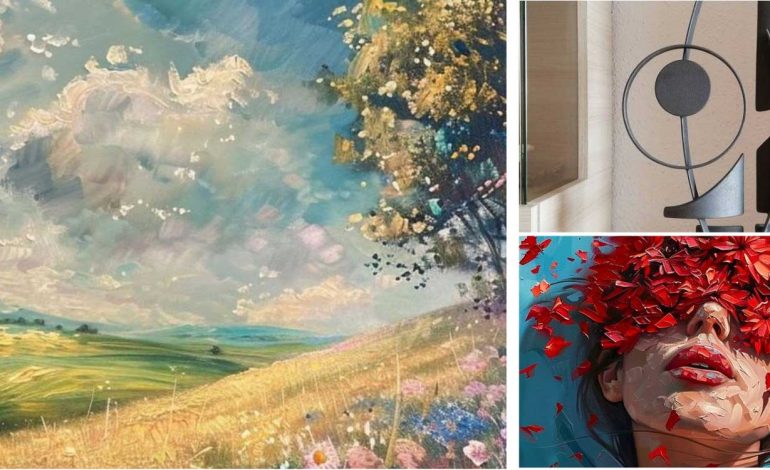Mauritius is not just about stunning beaches and crystal-clear waters. It is also a treasure trove of cultural wonders waiting to be discovered. From historic landmarks to sacred sites and fascinating museums, there is so much to explore on this beautiful island in the Indian Ocean.
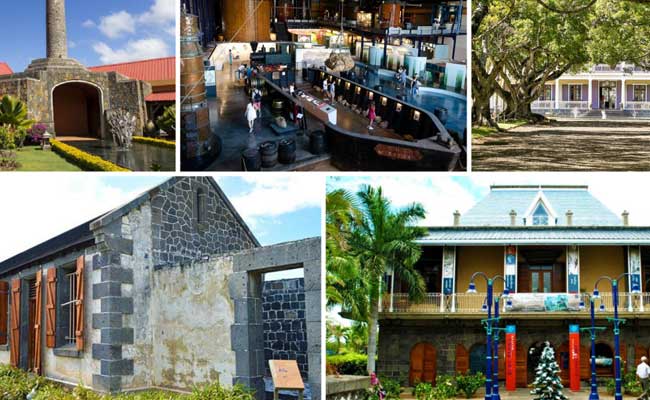
Aapravasi Ghat
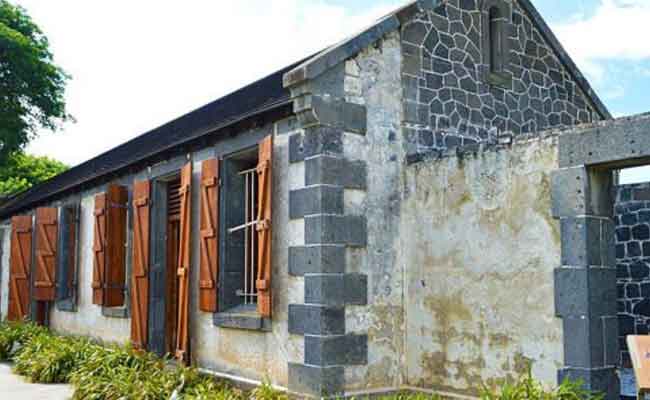
Aapravasi Ghat, derived from the Hindi word meaning “Immigrant,” was established in 1849 as a pivotal entry point for labourers from India, Eastern Africa, Madagascar, China, and Southeast Asia. These individuals arrived between 1849 and 1923 to contribute to Mauritius’ sugar industry following the abolition of slavery in the British Empire. Designated a UNESCO World Heritage site in 2006, Aapravasi Ghat underscores the profound impact of the global indentured labour system during the 19th and early 20th centuries, shaping migration patterns worldwide.Today, Aapravasi Ghat allows visitors to explore meticulously restored buildings and gain insight into the labourers’ experiences through informative displays and guided tours. The site also hosts educational programmes, cultural events, and commemorations aimed at preserving the legacy of these labourers in Mauritius and beyond. It stands as a poignant symbol of Mauritius’ diverse heritage and its historical ties to global labour movements, offering a profound glimpse into the island’s complex history and development.
Le Morne Brabant
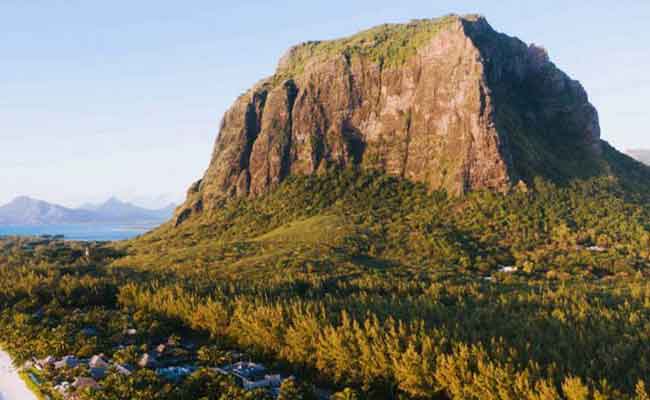
Nestled on the southwest coast of Mauritius, Le Morne Brabant is not just a mountain—it is a powerful symbol of freedom. Back in the day, it sheltered runaway slaves, becoming a beacon of resistance against oppression. Recognized also as a UNESCO World Heritage site in July 2008, Le Morne Brabant offers more than just stunning views of the Indian Ocean. It is a playground for hikers and nature lovers, with its rugged trails and unique plants and animals. But there is more to Le Morne Brabant than meets the eye. Guided tours and educational programs give visitors a deeper understanding of its historical significance and Mauritius’ rich cultural heritage. Whether you are into history, hiking, or just soaking up natural beauty, Le Morne Brabant promises an unforgettable experience that blends adventure with a powerful history lesson.
Ganga Talao also known as Grand Bassin
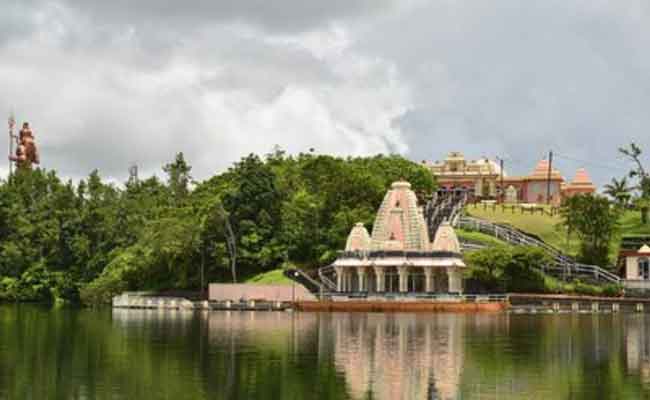
Step into the serene beauty of Ganga Talao, affectionately known as Grand Bassin, nestled among the lush mountains of Savanne District, Mauritius. This sacred crater lake holds a special place in the hearts of Hindus, believed to embody the spirit of India’s revered Ganges River. Imagine strolling through peaceful forests, surrounded by temples adorned with statues of Hindu gods—a place where spirituality and nature intertwine harmoniously. During Maha Shivaratri, the lake comes alive with vibrant celebrations, drawing pilgrims who gather to pray and partake in ancient rituals. Beyond its religious significance, Ganga Talao offers a sanctuary for quiet reflection and connection with Mauritius’ cultural tapestry. Conservation efforts ensure the lake remains pristine, inviting visitors to unwind and immerse themselves in the island’s rich traditions. Whether seeking spiritual enlightenment or simply embracing tranquillity, Ganga Talao promises an unforgettable journey into Mauritius’ soulful landscapes and vibrant community spirit.
Eureka House
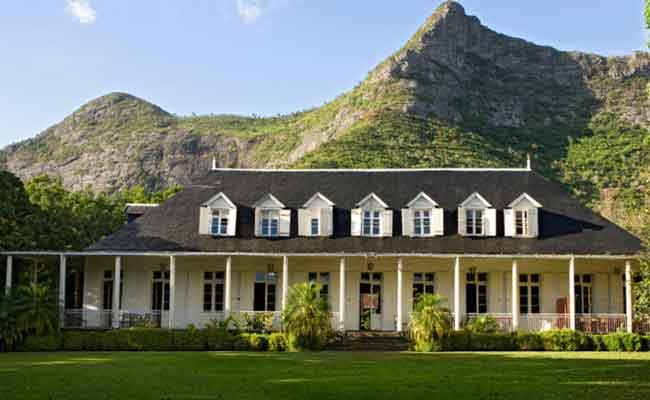
Explore the captivating world of Eureka House, situated in the tranquil landscapes of Moka, Mauritius. Built around 1830 during British colonial rule, Eureka House showcases stunning Creole architecture with spacious verandas and intricate wooden details. As you wander through the mansion-turned-museum, you will discover beautifully preserved rooms adorned with period furniture, artwork, and artefacts that offer a glimpse into Mauritius’ plantation era. The estate’s gardens, known as Eureka Gardens, are a tranquil oasis filled with exotic plants, ponds, and winding pathways—a perfect spot for a leisurely stroll or quiet reflection.Eureka House is not just about history; it is a cultural gem hosting events like traditional music performances and exhibitions that celebrate Mauritius’ vibrant heritage. Are you fascinated by architecture, history, or simply seeking a peaceful escape amidst nature? Eureka House promises an enriching experience that captures the essence of Mauritius’ colonial past and natural beauty.
Notre Dame Auxiliatrice
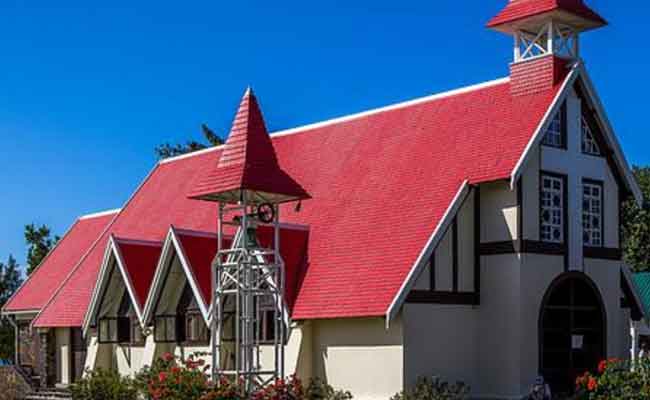
Notre Dame Auxiliatrice, also called Cap Malheureux Church, was built in 1870 by Father Barthelemy Le Juge de Segrais to honour the Virgin Mary, known as Our Lady of Help. Its striking Gothic-style architecture, complete with a vibrant red roof and whitewashed walls, offers stunning views of the Indian Ocean from Mauritius’ northern coast. This iconic church has been a place of worship for generations of Catholics on the island, symbolising faith and community. Its serene setting and picturesque surroundings make it a popular spot for visitors seeking both spiritual solace and beautiful vistas. Notre Dame Auxiliatrice continues to be a cherished cultural landmark, blending history, religious tradition, and natural beauty in a way that captures the essence of Mauritius’ coastal charm.
Blue Penny Museum
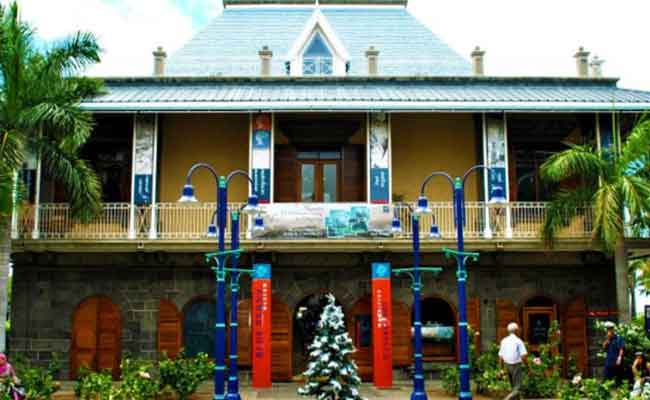
The Blue Penny Museum in Port Louis, Mauritius, is a treasure trove of history and culture, named after the rare Blue Penny and Red Penny stamps issued in 1847, among the world’s most valuable. These stamps are icons of early Mauritian postal history, reflecting the island’s role in global trade and communication during colonial times.Founded to showcase these stamps and Mauritius’ rich heritage, the museum features not only philatelic gems but also artefacts, maps, and artworks that chronicle the island’s diverse past. Visitors can explore interactive exhibits that detail the stamps’ discovery and significance, alongside rotating displays highlighting Mauritius’ maritime legacy and multicultural society.Beyond its historical relics, the museum serves as an educational hub, offering insights into Mauritius’ evolution from colonial outpost to cultural melting pot. It is a must-visit for history buffs and curious minds alike, blending fascination with stamps and a deep dive into Mauritius’ captivating past.
Sir Seewoosagur Ramgoolam Botanical Garden
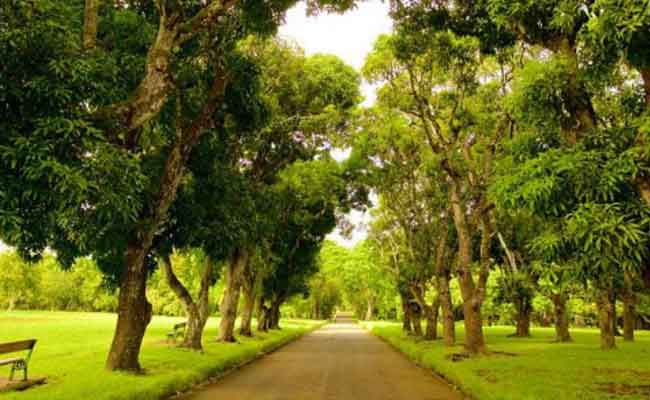
The Sir Seewoosagur Ramgoolam Botanical Garden, or Pamplemousses Botanical Garden, in Mauritius is a lush oasis with roots dating back to 1770, thanks to French botanist Pierre Poivre. Originally a hub for experimenting with new plants, it is grown into a sprawling haven showcasing a stunning mix of local and exotic flora. Named after Mauritius’ first Prime Minister, Sir Seewoosagur Ramgoolam, the garden blends history and nature beautifully. You can stroll palm-lined paths, spot giant Victoria amazonica water lilies in ponds, and explore the historic Château de Mon Plaisir, now a museum. Beyond its beauty, the garden plays a crucial role in conservation and education, preserving endangered plants and offering insights into Mauritius’ biodiverse heritage. To you nature lover who is simply seeking a peaceful retreat, Pamplemousses Botanical Garden promises a memorable experience immersed in Mauritius’ botanical wonders and rich cultural history.
Martello Tower Museum
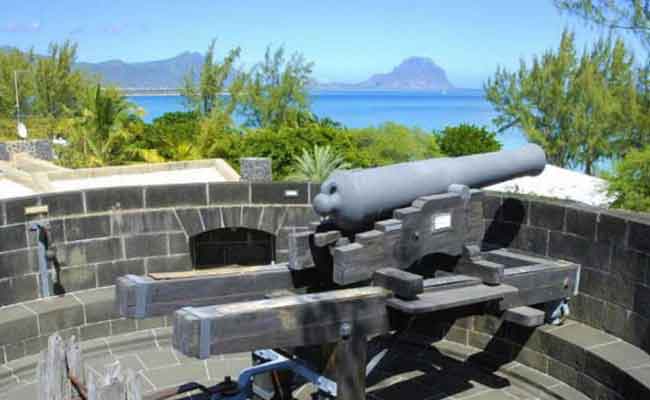
Martello Tower in Mauritius, built between 1832 and 1835 by the British, stands as a testament to the island’s strategic military history. Designed as a coastal defence against potential threats, particularly from French naval forces, the tower features thick walls and strategically placed cannons on its roof.This cylindrical structure played a pivotal role in safeguarding Mauritius during the colonial era, reflecting its importance in the Indian Ocean trade routes. Today, Martello Tower has been transformed into a museum, offering visitors a compelling glimpse into its military significance and the island’s past.Inside, exhibits and historical items detail the tower’s defensive mechanisms and its impact on Mauritius’ development. The museum provides a unique opportunity to explore the island’s maritime heritage and colonial history, making it a captivating destination for history enthusiasts and those curious about Mauritius’ strategic role in the 19th century.
L’aventure du sucre
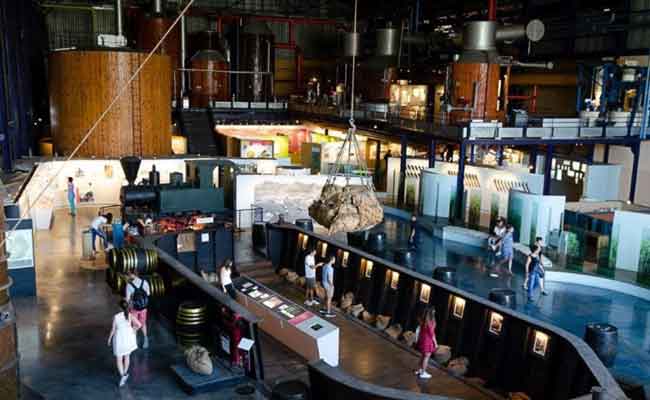
L’Aventure du Sucre, located in Beau Plan, Mauritius, immerses visitors in the island’s vibrant sugar industry history. Housed in a historic sugar factory dating back to the 18th century, the museum offers a captivating journey through Mauritius’ sugar-making heritage.Interactive exhibits and multimedia displays showcase every aspect of sugar production, from cultivation in the fields to processing in the factory. It delves into the social, economic, and cultural impacts of sugar on Mauritius, highlighting its pivotal role as a major exporter during colonial times.Tourists can enjoy guided tours, taste various sugar products, and explore the scenic surroundings of lush tropical gardens. L’Aventure du Sucre also emphasises sustainability in sugar production, addressing modern challenges like environmental conservation and fair trade practices. This museum not only educates but also celebrates Mauritius’ agricultural legacy, making it a must-visit destination for understanding the island’s rich cultural and economic history.
La Rhumerie de Chamarelle
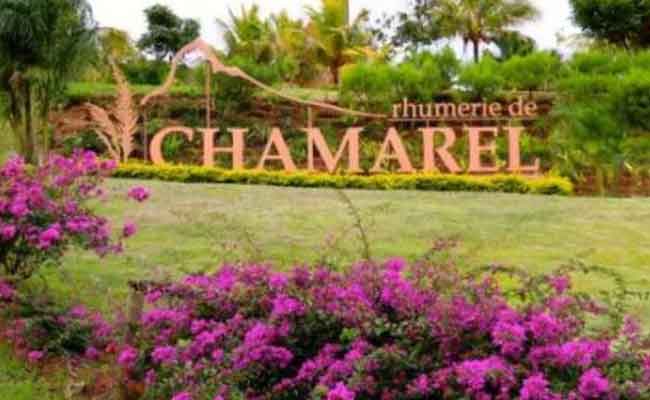
Rhumerie de Chamarel, situated in Chamarel, Mauritius, is a renowned boutique distillery celebrated for its production of premium rum. Located amidst picturesque sugarcane fields, the distillery honours Mauritius’ rich agricultural heritage. Using locally grown sugarcane, it crafts a variety of high-quality rums known for their smoothness and distinctive flavours. You can take guided tours of the distillery, gaining insights into every stage of rum production, from cultivation and harvesting to distillation and ageing. These tours include tastings of the distillery’s signature rums, allowing guests to appreciate the craftsmanship and expertise involved. Beyond rum-making, Rhumerie de Chamarel offers a cultural exploration into Mauritius’ history of sugarcane cultivation and rum distillation. The distillery’s commitment to sustainability and environmental responsibility further enhances its appeal, making it a must-visit destination for those seeking artisanal spirits, cultural enrichment, and scenic beauty in Mauritius.
Château de Labourdonnais
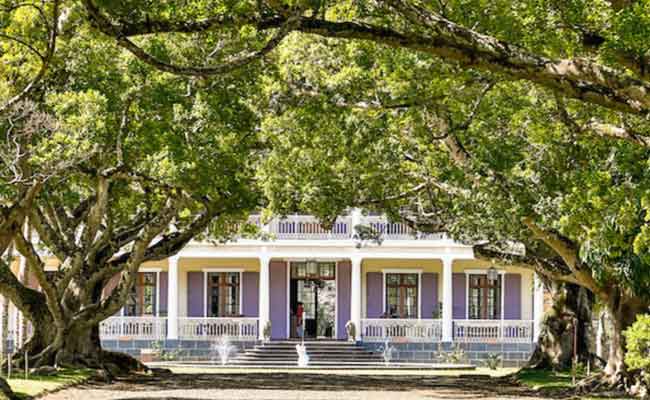
The Château de Labourdonnais, nestled in the northern part of Mauritius, is a charming colonial house surrounded by exquisite gardens and orchards. This cultural gem offers visitors a glimpse into 19th-century colonial life.The orchards are meticulously landscaped with a variety of trees, including exotic tropical fruits and spice plants. Visitors can indulge in tastings of products from the on-site distillery and sample fresh fruits from the orchards. Additionally, the estate features a shop where guests can purchase delightful jams, fruit juices, and other local products. It’s a perfect blend of history, nature, and gastronomy, providing an enriching experience for all who visit.
A Journey Through Cultural Sites and Heritage
To sum up, Mauritius’ cultural sites are a fascinating journey through its diverse heritage, blending colonial history with vibrant local traditions. From the grand Château de Labourdonnais to the poignant Aapravasi Ghat and lush botanical gardens, each spot tells a unique story of the island’s past and present. These places not only preserve Mauritius’ rich cultural identity but also invite you to explore its stunning architecture and natural beauty. Whether you’re strolling through historic estates or pondering the island’s complex history, Mauritius’ cultural sites promise an enriching experience that celebrates its multicultural charm and lasting impact in the Indian Ocean.
